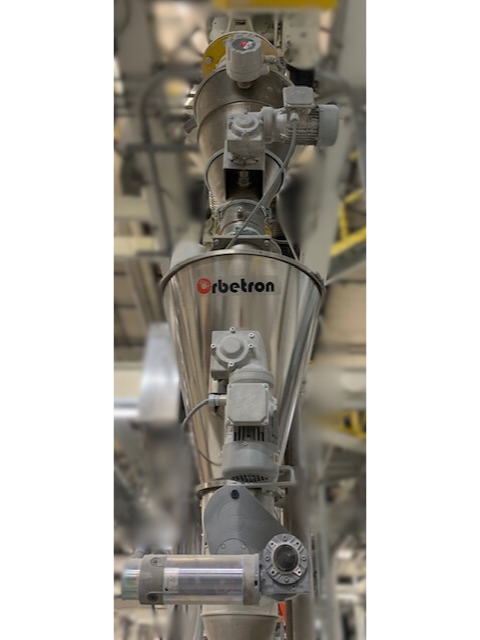The efficient and effective handling of bulk materials, both liquid and dry, is foundational across a vast range of industries. The way businesses store, transport, process, and measure these materials often directly impacts production efficiency, product quality, and overall profitability.
As technology advances, the field of bulk material handling is seeing exciting innovations that are streamlining operations, improving safety, and driving sustainability across various sectors. This guide explores some of the key innovations and their potential impact on industries.
1. Smart and IoT-Enabled Packaging
The integration of sensors, tracking devices, and real-time data connectivity into bulk material packaging is a game-changer for industries. By embedding tiny sensors capable of monitoring temperature, humidity, pressure, and location, smart packaging provides a dynamic window into the conditions under which materials are transported and stored.
This real-time visibility yields immense benefits across the supply chain. Businesses gain unprecedented insights into the journey of their materials (from the point of origin to the end consumer). Should temperature fluctuations threaten the integrity of perishable goods or humidity levels pose a risk to sensitive materials, alerts are promptly triggered, allowing for corrective action.
This proactive approach significantly reduces wastage, protects product quality, and can even optimize shipping routes based on environmental data.
Additionally, IoT-enabled packaging adds a formidable layer of security. Tracking the precise location of shipments deters theft and ensures product authenticity. Should a recall become necessary, the ability to pinpoint the exact location of affected products allows for swift and efficient action.
2. Sustainable Packaging Solutions

As concerns for the environment escalate, the demand for sustainable packaging solutions is also increasing. The search for alternatives to single-use plastics is leading to groundbreaking innovations.
Biodegradable and compostable materials, derived from plant-based or naturally occurring sources, offer a path towards lessening environmental impact. These materials are designed to break down organically over time.
Simultaneously, the focus on recyclable packaging is intensifying. Designing bulk containers and packaging elements specifically for reuse or streamlined recycling promotes the principles of a circular economy. This means materials are kept in circulation for as long as possible, minimizing the need for raw material extraction and reducing waste generation.
Sustainable packaging is further enhanced with innovations in optimized design. By carefully analyzing the precise needs of the material being transported, engineers can minimize the amount of packaging required while ensuring its protective properties.
3. Advanced Material Handling Systems
The integration of automation and robotics into facilities is reshaping material handling processes.
Automated guided vehicles (AGVs), capable of navigating autonomously through warehouses and manufacturing environments, are streamlining the movement of bulk materials. AGVs reduce the need for manual labor; they free up human workers for more complex tasks while simultaneously improving efficiency and reducing the risk of workplace accidents.
Collaborative robots expand automation possibilities further. Cobots, designed to work side-by-side with human personnel, excel at repetitive or physically demanding tasks related to bulk material handling. Their ability to handle tasks like loading, unloading, and palletizing introduces new levels of efficiency and frees up human workers for more value-adding roles.
Conveyor systems are also receiving an intelligence upgrade. Advanced conveyors capable of automatic sorting and routing of materials based on real-time data are optimizing material flow and minimizing bottlenecks within facilities. These systems reduce the need for manual intervention and contribute to a more streamlined, efficient, and predictable production environment.
4. Precision Feeders and Dispensers
Precision feeding and dispensing of materials are the backbone of many industries. Advancements in this area are ensuring unparalleled accuracy and control over materials.
Highly accurate volumetric and gravimetric feeders are at the forefront of these innovations. Volumetric feeders measure and dispense materials based on volume, while gravimetric feeders employ precise weight measurements to ensure consistency. Both systems are finding applications in industries where even the smallest deviations in ingredient ratios can compromise the final product.
For processes requiring the dispensing of extremely small quantities of materials, micro-feeders are changing the game. These specialized feeders, often employed in laboratory settings or for the production of high-value products, are capable of handling minute amounts of powders or liquids with remarkable precision.
Loss-in-weight (LIW) feeders offer another approach to precision dispensing. As material is dispensed from a hopper or container, the continuous weight measurement ensures precise metering of ingredients based on weight loss. LIW systems are particularly effective for achieving accurate blends and ensuring product consistency.
5. Bulk Solids Handling Equipment

While seemingly simple, the effective handling of bulk solids (e.g., powders, granules, and other dry materials) presents numerous challenges. Issues like clumping, bridging, and erratic flow patterns can disrupt production and cause inconsistencies.
Innovations in bulk solids handling equipment are specifically designed to tackle these challenges. Specialized agitators are engineered to prevent clumping or bridging within storage hoppers and containers. Their designs, often tailored to the specific properties of the material being handled, promote smooth and consistent discharge.
Advances in blender design are also transforming mixing operations in various industries. New mixer designs focus on maximizing mixing efficiency, reducing batch times, and achieving incredibly homogenous blends (even when working with challenging mixes or trace ingredients).
Even seemingly basic equipment like hoppers are getting a technological upgrade. Smart hoppers incorporate sensors to monitor material levels in real-time. This simple integration of sensors streamlines operations and minimizes unnecessary material waste.
6. Hygienic Design Innovations
Hygienic design is a non-negotiable factor for industries like food processing and pharmaceuticals. Even the smallest design flaw in equipment or packaging can become a breeding ground for harmful bacteria. The result? Product contamination and potential public health risks.
Innovations in hygienic design are hyper-focused on eliminating any potential point of contamination. The use of easy-to-clean surfaces, like high-grade stainless steel and specialized coatings, is a key principle. These materials are resistant to corrosion, minimize microbial growth, and can withstand rigorous cleaning procedures.
Crevice-free designs are also imperative. Equipment is meticulously designed to eliminate any seams, gaps, or hard-to-reach areas where product buildup or bacteria could harbor.
Hygienic design principles extend to packaging as well. Sterilizable packaging solutions, particularly for sensitive products in the food and pharmaceutical sectors, offer the highest level of protection. These specialized packaging materials are designed to withstand sterilization processes.
7. Liquid Mixing and Metering Systems

The ability to precisely mix and dispense liquids is a cornerstone of numerous industries spanning chemicals, cosmetics, food and beverage, and even pharmaceuticals.
Advancements in liquid handling technologies are focused on achieving greater precision, control, and efficiency throughout these processes. In-line mixing systems are a notable innovation disrupting traditional batch-based mixing methods. By integrating mixing elements directly into pipelines, in-line mixers allow for continuous, on-demand mixing of liquids. This eliminates the need for large batch processing tanks, reduces cleaning requirements, and enables rapid changes in product formulations. The elimination of holding tanks also minimizes safety risks associated with storing large volumes of potentially hazardous liquids.
Precision dispensing is another area of significant advancement. High-accuracy gear pumps are engineered to deliver remarkably precise volumes of liquids (even when handling viscous fluids or those with chemically aggressive properties). These specialized pumps find applications in industries where even the smallest deviations in ingredient ratios can compromise the final product or where the precise metering of costly liquids is essential to minimize waste.
Advances in metering and control technology are further revolutionizing liquid mixing and blending processes. Precision sensors, combined with intelligent control software, enable the automation of complex mixing sequences. Real-time adjustments to flow rates, temperatures, mixing speeds, and ingredient additions can be made automatically based on sensor data. This level of control ensures product consistency and quality. It also enhances process efficiency and minimizes human intervention.
The innovations in liquid mixing and metering systems translate directly into benefits for various industries. Manufacturers can achieve tighter tolerances in product formulations, streamline their processes, increase throughput, minimize waste, and enhance the overall safety profile of their production environments.
Discover Precision and Efficiency with Orbetron
The world of bulk material handling is rapidly evolving. To fully harness the potential of these advancements, partnering with a trusted industry expert like Orbetron can be a game-changer.
At Orbetron, we specialize in developing cutting-edge bulk feeding solutions and liquid mix systems that address your industry’s unique requirements. Whether you work with powders, granules, or viscous liquids, our engineers can customize solutions that optimize your processes.

